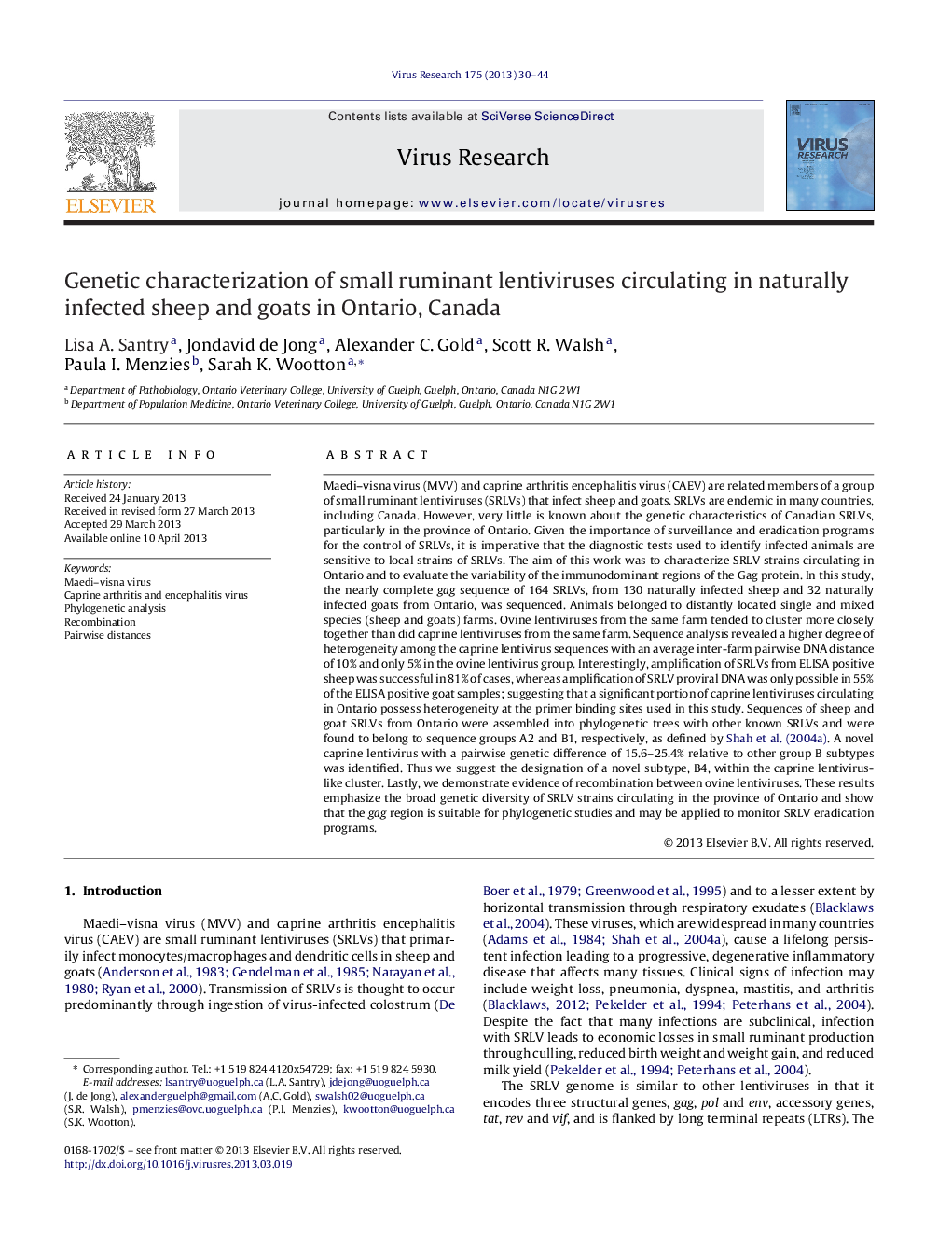| Article ID | Journal | Published Year | Pages | File Type |
|---|---|---|---|---|
| 3428618 | Virus Research | 2013 | 15 Pages |
•This is the first report describing molecular characterization of small ruminant lentiviruses (SRLVs) in Ontario.•Caprine lentiviruses from Ontario are more heterogeneous than ovine lentiviruses; however immunodominant epitopes in Gag appear to be conserved.•A novel caprine lentivirus with a pairwise difference of 15.6–25% relative to other group B subtypes was identified and designated as subtype B4.•Two examples of recombination within the gag gene of group A SRLVs were identified.•Phylogenetic analysis of Ontario SRLVs will permit the development of better molecular diagnostic tests to corroborate ELISA results.
Maedi–visna virus (MVV) and caprine arthritis encephalitis virus (CAEV) are related members of a group of small ruminant lentiviruses (SRLVs) that infect sheep and goats. SRLVs are endemic in many countries, including Canada. However, very little is known about the genetic characteristics of Canadian SRLVs, particularly in the province of Ontario. Given the importance of surveillance and eradication programs for the control of SRLVs, it is imperative that the diagnostic tests used to identify infected animals are sensitive to local strains of SRLVs. The aim of this work was to characterize SRLV strains circulating in Ontario and to evaluate the variability of the immunodominant regions of the Gag protein. In this study, the nearly complete gag sequence of 164 SRLVs, from 130 naturally infected sheep and 32 naturally infected goats from Ontario, was sequenced. Animals belonged to distantly located single and mixed species (sheep and goats) farms. Ovine lentiviruses from the same farm tended to cluster more closely together than did caprine lentiviruses from the same farm. Sequence analysis revealed a higher degree of heterogeneity among the caprine lentivirus sequences with an average inter-farm pairwise DNA distance of 10% and only 5% in the ovine lentivirus group. Interestingly, amplification of SRLVs from ELISA positive sheep was successful in 81% of cases, whereas amplification of SRLV proviral DNA was only possible in 55% of the ELISA positive goat samples; suggesting that a significant portion of caprine lentiviruses circulating in Ontario possess heterogeneity at the primer binding sites used in this study. Sequences of sheep and goat SRLVs from Ontario were assembled into phylogenetic trees with other known SRLVs and were found to belong to sequence groups A2 and B1, respectively, as defined by Shah et al. (2004a). A novel caprine lentivirus with a pairwise genetic difference of 15.6–25.4% relative to other group B subtypes was identified. Thus we suggest the designation of a novel subtype, B4, within the caprine lentivirus-like cluster. Lastly, we demonstrate evidence of recombination between ovine lentiviruses. These results emphasize the broad genetic diversity of SRLV strains circulating in the province of Ontario and show that the gag region is suitable for phylogenetic studies and may be applied to monitor SRLV eradication programs.
